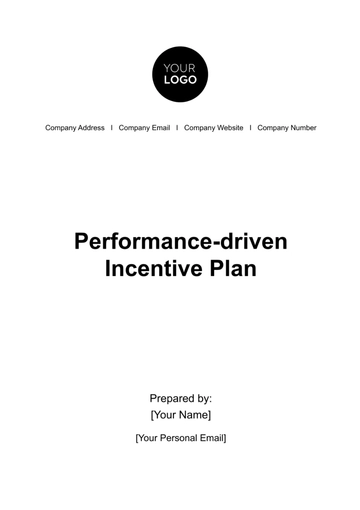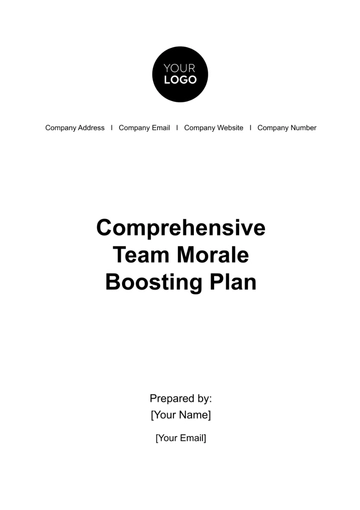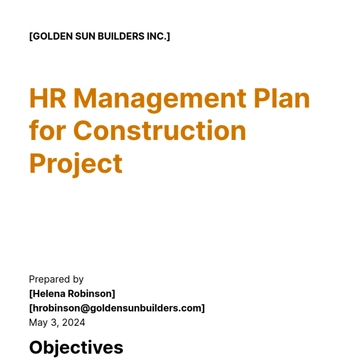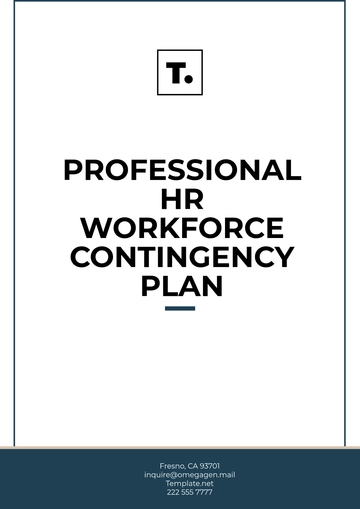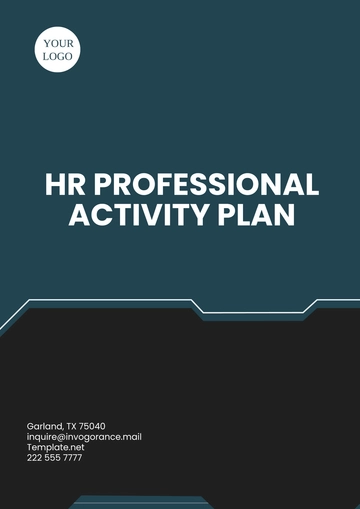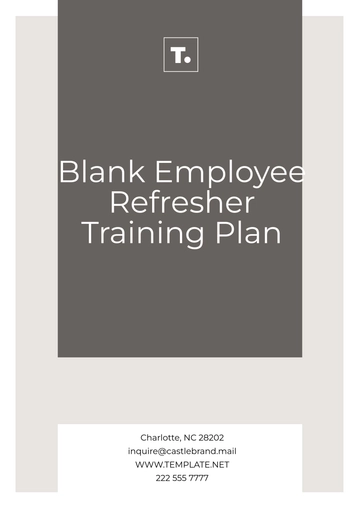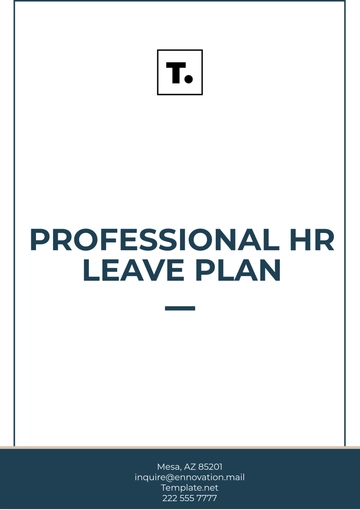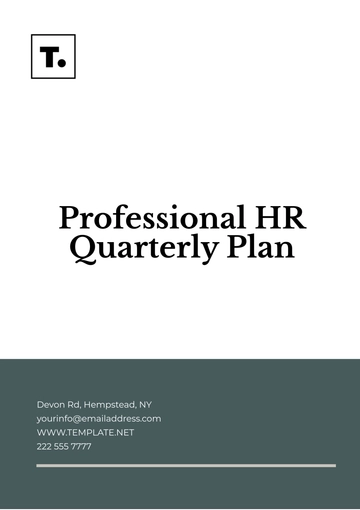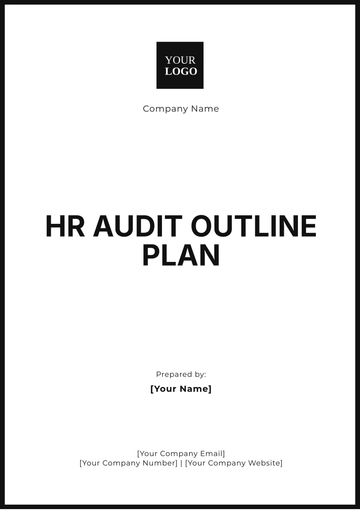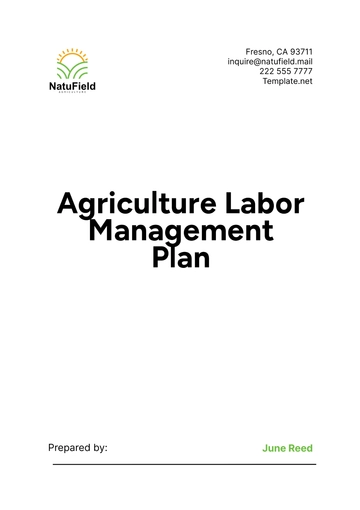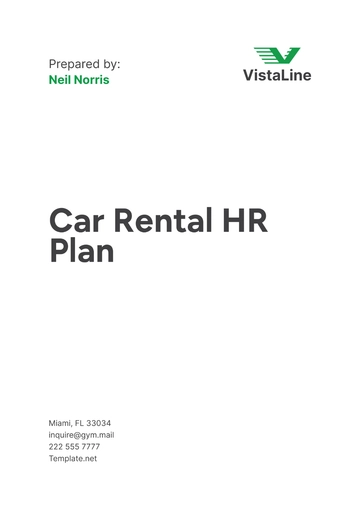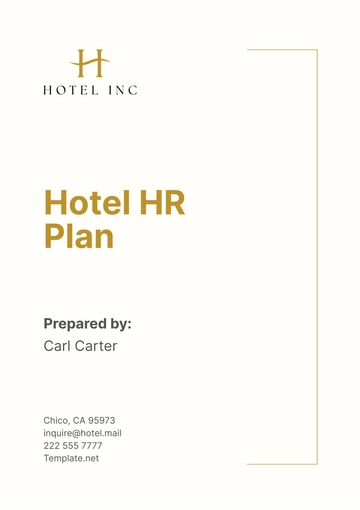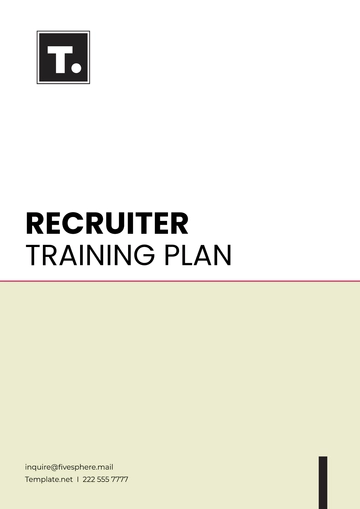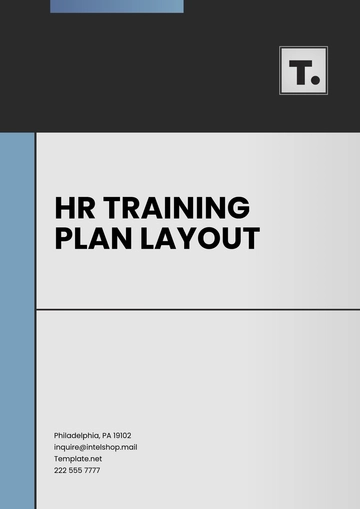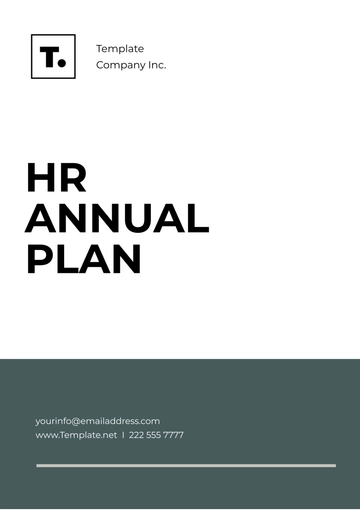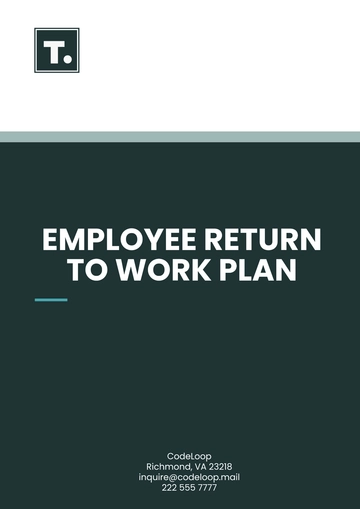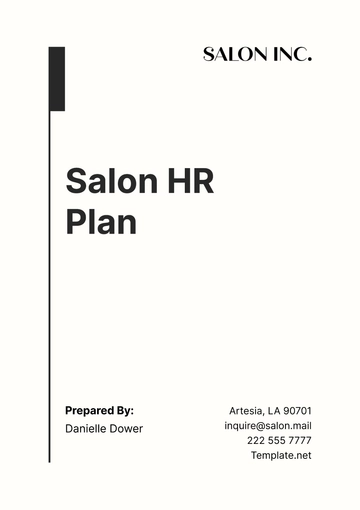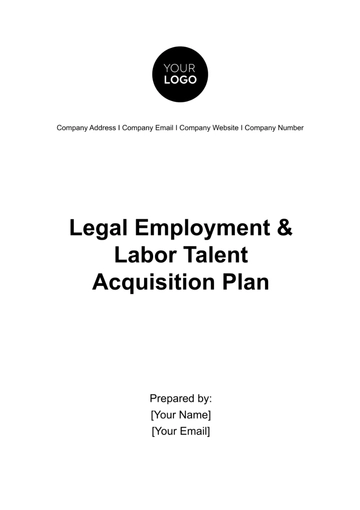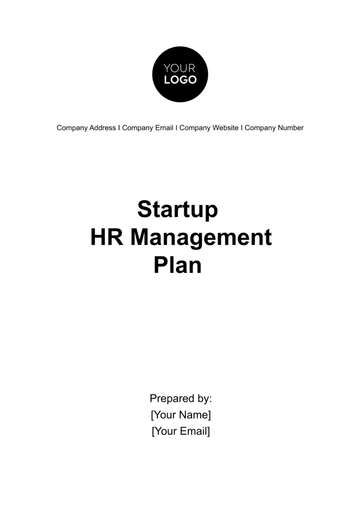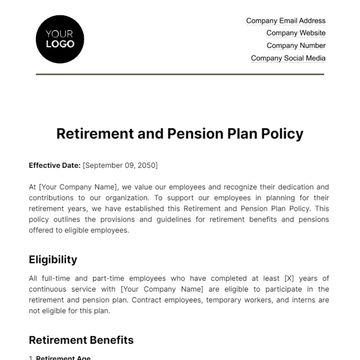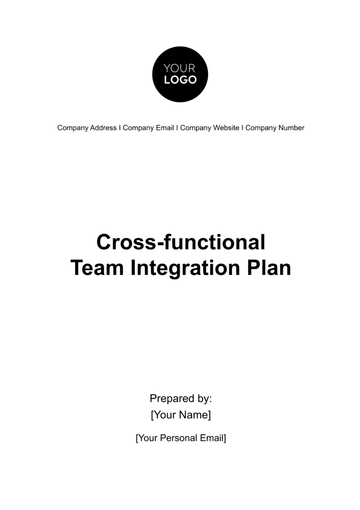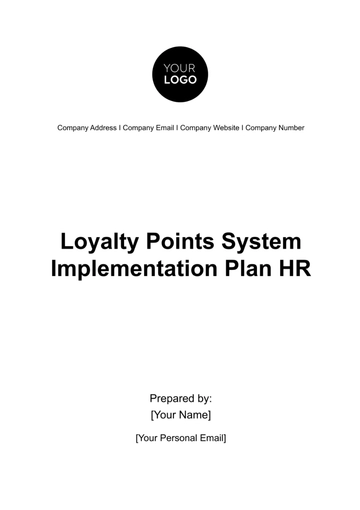Free Agriculture Labor Management Plan
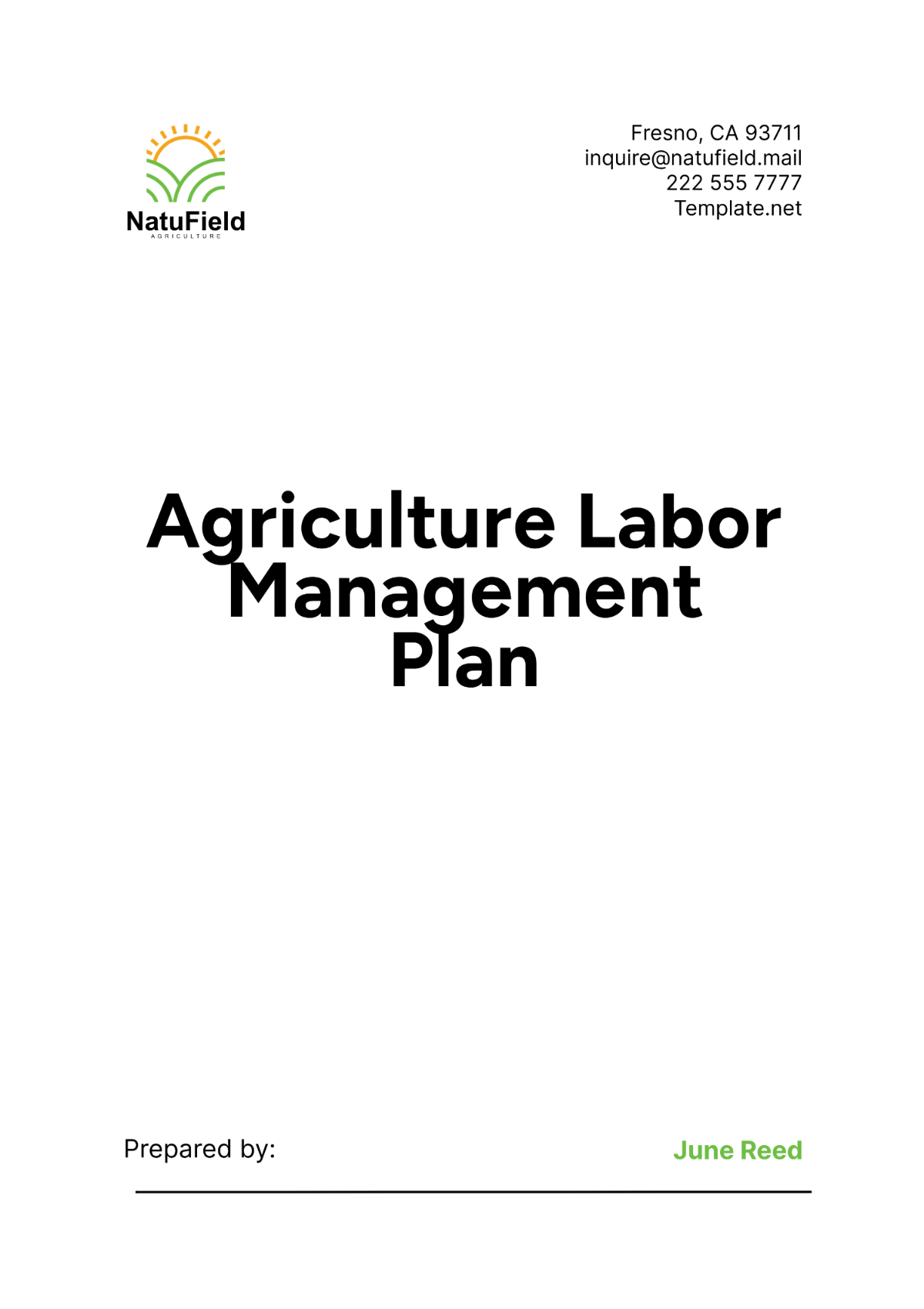
I. Introduction
The purpose of this Agriculture Labor Management Plan is to outline [Your Company Name]'s strategies and processes for effectively managing our agricultural workforce. This plan covers all aspects of labor management, from assessing labor needs to recruitment, training, and performance evaluation. By implementing this plan, we aim to ensure that we have a skilled and motivated workforce to meet our operational demands and achieve our organizational goals.
II. Labor Needs Assessment
To maintain efficiency and productivity in our agricultural operations, it is crucial to assess our labor needs accurately. This involves analyzing the current workforce size and comparing it with our labor demand throughout different seasons and activities. The following table provides an overview of our current labor size versus demand:
Activity | Current Size | Labor Demand |
|---|---|---|
Land Preparation | 10 | 15 |
Planting | 20 | 25 |
Irrigation | 5 | 8 |
Weeding | 15 | 20 |
Fertilizing | 7 | 10 |
Pest Control | 5 | 7 |
Harvesting | 30 | 40 |
Post-Harvest Processing | 10 | 15 |
The table indicates that our current workforce size is insufficient to meet the labor demand for several key activities, particularly during peak seasons such as planting and harvesting. To address this gap, we need to enhance our recruitment efforts and implement effective labor scheduling and training programs.
III. Recruitment and Hiring Strategies
A. Recruitment Plan
Our recruitment plan focuses on attracting skilled and reliable workers to meet our labor needs. We will utilize various recruitment channels, including job fairs, online job boards, local community centers, and agricultural training institutes. Additionally, we will offer competitive wages and benefits to attract and retain top talent. The hiring process is as follows:
Define job requirements and create detailed job descriptions.
Post job openings on various recruitment channels.
Review and shortlist applications.
Conduct initial phone screenings.
Schedule and conduct in-person interviews.
Perform background checks and reference verifications.
Make job offers and negotiate terms.
Onboard new employees with orientation and training sessions.
B. Interview and Selection Criteria
Our interview and selection criteria are designed to ensure that we hire individuals who possess the necessary skills, experience, and cultural fit for our organization. The following table outlines the key criteria we will use during the selection process:
Criteria | Weight (%) |
|---|---|
Relevant Experience | 30 |
Technical Skills | 25 |
Interpersonal Skills | 20 |
Cultural Fit | 15 |
Availability | 10 |
IV. Training and Development
To ensure our workforce is well-equipped to handle their responsibilities, we will implement comprehensive training and development programs. The following table outlines our training programs, along with their frequency and duration:
Program | Frequency | Duration |
|---|---|---|
New Employee Orientation | Upon Hiring | 1 Day |
Safety Training | Quarterly | 1 Day |
Equipment Operation | Semi-Annually | 2 Days |
Crop Management | Annually | 3 Days |
Leadership Development | Annually | 2 Days |
By providing regular and targeted training programs, we aim to enhance the skills and knowledge of our employees, ensuring they can perform their duties safely and effectively. Continuous development opportunities will also help in retaining top talent and promoting internal growth within our organization.
V. Labor Scheduling
A. Work Schedules and Shifts
We will implement a structured work schedule to ensure optimal productivity and efficient use of labor resources. Employees will be assigned to shifts based on operational needs and individual availability. The following table outlines our standard work schedule:
Shift | Start Time | End Time | Days |
|---|---|---|---|
Morning Shift | 6:00 AM | 2:00 PM | Monday - Friday |
Afternoon Shift | 2:00 PM | 10:00 PM | Monday - Friday |
Weekend Shift | 6:00 AM | 6:00 PM | Saturday - Sunday |
B. Seasonal Adjustments
Labor demand in agriculture is highly seasonal, necessitating adjustments to work schedules and shifts. During peak seasons, such as planting and harvesting, we will increase the number of shifts and extend working hours to accommodate the higher workload. Off-peak seasons will have reduced hours and fewer shifts to align with decreased labor demand.
C. Overtime Management
To manage overtime effectively, we will monitor labor hours closely and ensure that overtime is authorized only when necessary. Overtime will be distributed equitably among employees to prevent burnout and ensure fair compensation. Employees will be compensated for overtime work at the rates specified in our compensation policies.
D. Contingency Plans
In the event of unforeseen circumstances, such as inclement weather or labor shortages, we will activate our contingency plans. These plans include reallocating resources, hiring temporary workers, and adjusting work schedules to maintain continuity in operations. Regular reviews and updates of contingency plans will ensure readiness for any situation.
VI. Compensation and Benefits
A. Wage Structures
Our wage structures are designed to provide competitive compensation that reflects the skills and experience of our employees. The following table outlines the wage structure for various positions:
Position | Hourly Rate ($) | Overtime Rate ($) |
|---|---|---|
General Laborer | 15 | 22.50 |
Equipment Operator | 18 | 27 |
Supervisor | 22 | 33 |
Manager | 30 | 45 |
B. Overtime Policies
Employees who work beyond the standard 40-hour workweek will be compensated at 1.5 times their regular hourly rate. Overtime must be pre-approved by a supervisor, and unauthorized overtime will not be compensated. We aim to minimize overtime through effective labor scheduling and resource management.
C. Benefits Package
Our benefits package is designed to support the well-being and job satisfaction of our employees. The benefits include:
Health Insurance
Dental and Vision Insurance
Paid Time Off (PTO)
Retirement Savings Plan
Housing Allowance
Meals Provided During Shifts
D. Incentive Programs
To motivate and reward our employees, we offer several incentive programs, including:
Performance Bonuses
Employee of the Month Awards
Referral Bonuses
Attendance Bonuses
Skill Development Scholarships
VII. Employee Relations and Engagement
A. Communication Strategies
Effective communication is vital for maintaining strong employee relations and engagement. We will implement regular team meetings, provide clear and transparent updates on organizational changes, and maintain an open-door policy for employee concerns and suggestions. Digital communication platforms will also be used to facilitate timely and efficient information sharing.
B. Employee Feedback Mechanisms
To ensure continuous improvement and employee satisfaction, we will establish feedback mechanisms such as anonymous surveys, suggestion boxes, and regular one-on-one meetings with supervisors. This will allow us to gather valuable insights and address any issues promptly.
C. Conflict Resolution
Our conflict resolution process involves identifying the root cause of conflicts, facilitating open communication between parties involved, and working towards mutually beneficial solutions. Supervisors will be trained in conflict resolution techniques to handle disputes effectively and maintain a harmonious work environment.
D. Team-Building Activities
To foster a collaborative and positive workplace culture, we will organize various team-building activities, including:
Company Picnics
Sports Tournaments
Group Outings
Team-Building Workshops
Holiday Celebrations
VIII. Performance Management
Effective performance management is essential to ensure productivity and achieve organizational goals. We will implement a structured approach to monitor and evaluate employee performance. Key metrics and target values for performance evaluation are outlined in the following table:
Metric | Target Value |
|---|---|
Productivity | 95% efficiency |
Quality of Work | 98% accuracy |
Attendance | 98% attendance rate |
Adherence to Safety Rules | 100% compliance |
Customer Satisfaction | 90% satisfaction |
Performance metrics will be monitored on a quarterly basis through performance reviews conducted by supervisors. These reviews will assess individual performance against established targets and provide feedback to employees. Performance data will be documented and used to identify training needs, recognize outstanding performance, and address any performance issues promptly.
IX. Compliance and Legal Considerations
A. Labor Laws and Regulations
It is crucial for us to adhere to relevant labor laws and regulations to ensure legal compliance and uphold employee rights. Key US laws that govern our operations include the Fair Labor Standards Act (FLSA), Occupational Safety and Health Act (OSHA), and Family and Medical Leave Act (FMLA).
B. Compliance Audits
Compliance audits will be conducted annually to assess our adherence to labor laws and regulations. These audits will be thorough and systematic, covering areas such as wage and hour practices, workplace safety, and employee benefits. Results from audits will be used to address any compliance gaps and implement corrective actions as necessary.
C. Documentation
Proper documentation of employee records, including employment contracts, payroll records, and performance evaluations, will be maintained in accordance with legal requirements. Records will be stored securely and made available for audit purposes as needed.
D. Handling Legal Issues
In the event of legal issues or disputes, we will engage legal counsel to provide guidance and representation. We will strive to resolve issues through negotiation or mediation, aiming for fair and equitable outcomes for all parties involved. Clear communication and adherence to legal procedures will be prioritized to mitigate risks and uphold our organizational integrity.
X. Budget and Financial Planning
A. Labor Cost Analysis
Efficient management of labor costs is crucial for our financial sustainability. The following table outlines our projected labor costs based on wage rates and anticipated labor hours:
Activity | Estimated Labor Cost ($) |
|---|---|
Land Preparation | 25,000 |
Planting | 40,000 |
Irrigation | 10,000 |
Weeding | 30,000 |
Fertilizing | 15,000 |
Pest Control | 12,000 |
Harvesting | 60,000 |
Post-Harvest Processing | 20,000 |
Total | 212,000 |
The total projected labor cost of $212,000 reflects our commitment to adequately resource each operational phase. Monitoring these costs will ensure they align with our budgetary constraints and operational requirements.
B. Budget Allocation
Our budget allocation ensures resources are effectively distributed across operational needs. The following table summarizes our budget allocation for labor-related expenses:
Category | Budget Allocation ($) |
|---|---|
Labor Costs | 212,000 |
Training and Development | 15,000 |
Employee Benefits | 30,000 |
Incentive Programs | 5,000 |
Total | 262,000 |
The allocation of $262,000 underscores our commitment to enhancing workforce capabilities and ensuring competitive compensation and benefits, essential for maintaining workforce satisfaction and operational efficiency.
C. Cost Control Measures
To maintain financial stability, we will implement the following cost control measures:
Regular monitoring of labor costs against budget projections.
Optimizing workforce efficiency through effective scheduling and allocation.
Reviewing and renegotiating vendor contracts to secure competitive pricing.
Implementing energy-saving initiatives to reduce operational expenses.
XI. Future Outlook
Looking ahead, we are optimistic about the effectiveness of our labor management strategies in enhancing productivity and employee satisfaction. By continuing to refine our processes and adapt to industry trends, we aim to foster a resilient workforce capable of meeting future challenges and opportunities in the agricultural sector.
- 100% Customizable, free editor
- Access 1 Million+ Templates, photo’s & graphics
- Download or share as a template
- Click and replace photos, graphics, text, backgrounds
- Resize, crop, AI write & more
- Access advanced editor
Explore the Agriculture Labor Management Plan Template on Template.net. This editable and customizable tool facilitates efficient workforce management in agriculture. Adjustable in our AI Editor tool for tailored implementation, ensuring optimized scheduling and compliance with industry regulations. Ideal for enhancing productivity and organizational efficiency in agricultural operations.
You may also like
- Finance Plan
- Construction Plan
- Sales Plan
- Development Plan
- Career Plan
- Budget Plan
- HR Plan
- Education Plan
- Transition Plan
- Work Plan
- Training Plan
- Communication Plan
- Operation Plan
- Health And Safety Plan
- Strategy Plan
- Professional Development Plan
- Advertising Plan
- Risk Management Plan
- Restaurant Plan
- School Plan
- Nursing Home Patient Care Plan
- Nursing Care Plan
- Plan Event
- Startup Plan
- Social Media Plan
- Staffing Plan
- Annual Plan
- Content Plan
- Payment Plan
- Implementation Plan
- Hotel Plan
- Workout Plan
- Accounting Plan
- Campaign Plan
- Essay Plan
- 30 60 90 Day Plan
- Research Plan
- Recruitment Plan
- 90 Day Plan
- Quarterly Plan
- Emergency Plan
- 5 Year Plan
- Gym Plan
- Personal Plan
- IT and Software Plan
- Treatment Plan
- Real Estate Plan
- Law Firm Plan
- Healthcare Plan
- Improvement Plan
- Media Plan
- 5 Year Business Plan
- Learning Plan
- Marketing Campaign Plan
- Travel Agency Plan
- Cleaning Services Plan
- Interior Design Plan
- Performance Plan
- PR Plan
- Birth Plan
- Life Plan
- SEO Plan
- Disaster Recovery Plan
- Continuity Plan
- Launch Plan
- Legal Plan
- Behavior Plan
- Performance Improvement Plan
- Salon Plan
- Security Plan
- Security Management Plan
- Employee Development Plan
- Quality Plan
- Service Improvement Plan
- Growth Plan
- Incident Response Plan
- Basketball Plan
- Emergency Action Plan
- Product Launch Plan
- Spa Plan
- Employee Training Plan
- Data Analysis Plan
- Employee Action Plan
- Territory Plan
- Audit Plan
- Classroom Plan
- Activity Plan
- Parenting Plan
- Care Plan
- Project Execution Plan
- Exercise Plan
- Internship Plan
- Software Development Plan
- Continuous Improvement Plan
- Leave Plan
- 90 Day Sales Plan
- Advertising Agency Plan
- Employee Transition Plan
- Smart Action Plan
- Workplace Safety Plan
- Behavior Change Plan
- Contingency Plan
- Continuity of Operations Plan
- Health Plan
- Quality Control Plan
- Self Plan
- Sports Development Plan
- Change Management Plan
- Ecommerce Plan
- Personal Financial Plan
- Process Improvement Plan
- 30-60-90 Day Sales Plan
- Crisis Management Plan
- Engagement Plan
- Execution Plan
- Pandemic Plan
- Quality Assurance Plan
- Service Continuity Plan
- Agile Project Plan
- Fundraising Plan
- Job Transition Plan
- Asset Maintenance Plan
- Maintenance Plan
- Software Test Plan
- Staff Training and Development Plan
- 3 Year Plan
- Brand Activation Plan
- Release Plan
- Resource Plan
- Risk Mitigation Plan
- Teacher Plan
- 30 60 90 Day Plan for New Manager
- Food Safety Plan
- Food Truck Plan
- Hiring Plan
- Quality Management Plan
- Wellness Plan
- Behavior Intervention Plan
- Bonus Plan
- Investment Plan
- Maternity Leave Plan
- Pandemic Response Plan
- Succession Planning
- Coaching Plan
- Configuration Management Plan
- Remote Work Plan
- Self Care Plan
- Teaching Plan
- 100-Day Plan
- HACCP Plan
- Student Plan
- Sustainability Plan
- 30 60 90 Day Plan for Interview
- Access Plan
- Site Specific Safety Plan
